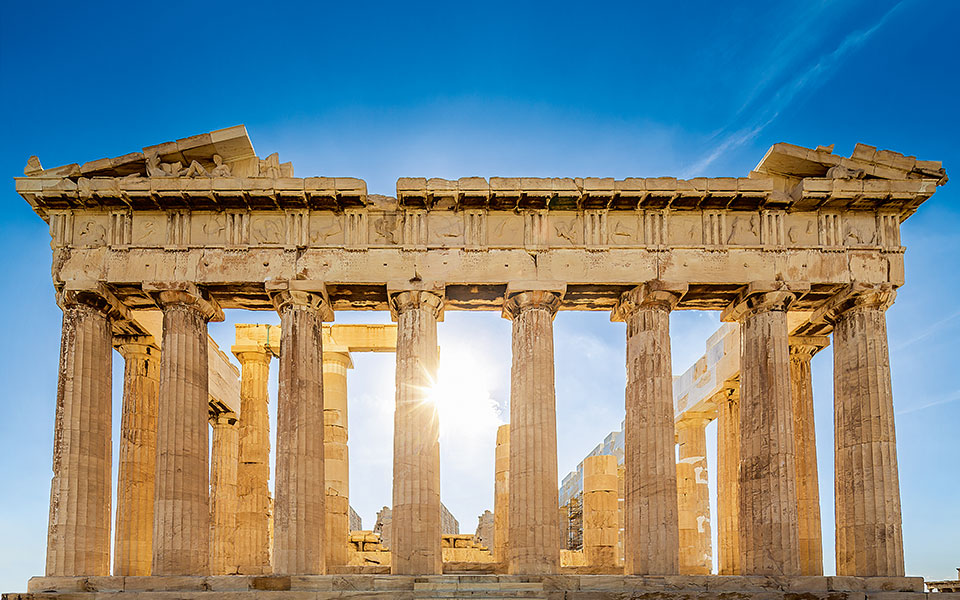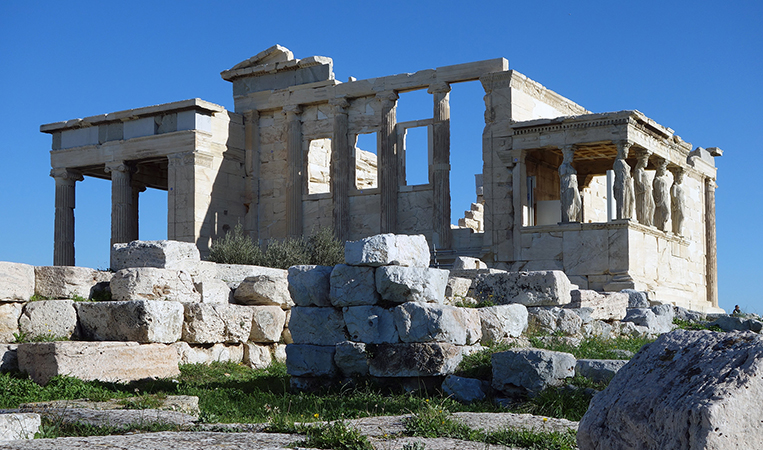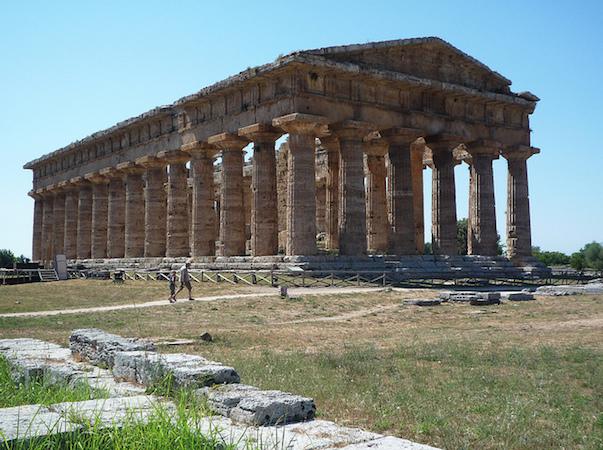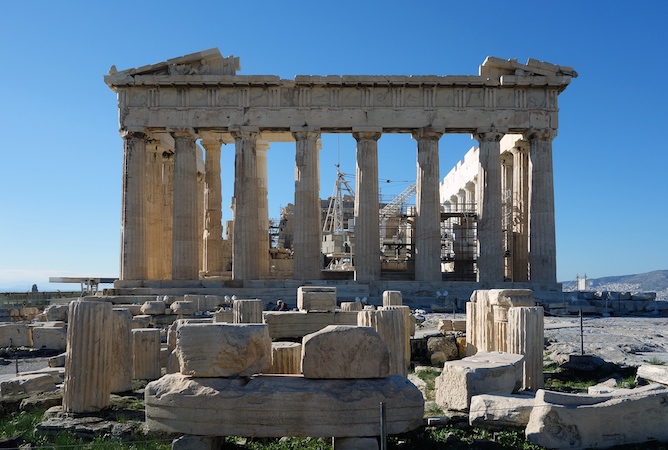Describe How the Following Features Are Used in Greek Temples
But Greek temples werent the first or only religious buildings in the panoply of Greek architecture. The temple had a stone or tufa foundation and the roof was covered in protective terra cotta tiles.

The Optical Illusions That Make The Parthenon Perfect Greece Is
Describe their main characteristics and name the Greek time period they are from.

. Temples served as the location of a cult image and as a storage place or strong room for the treasury associated with the cult of the god in question and as a place for devotees of the god to leave their votive offerings such as statues helmets and weapons. O Entasis O Donic O Peripteral O Corinthian. Columns only in front.
Imitation of Greek marble. Columns supported the roof but also gave buildings a feeling of order strength and balance. The Romans used concrete tile to construct most of their buildings.
They are often depicted as petite and dainty female figures. Etruscan temples stand on high podia with a single central staircase located at the front. Beneath the temples spread public meeting places civic buildings gymnasiums stadiums theaters and housing.
In other words the stylobate comprises the temple flooring. They are frontal and axial and often have more than one cella. Many of the architectural features used by the ancient Greeks are still used today.
I would use one portico in the front of the building as well as a portico in the back of the temple. Rear porch or opisthodomus. Column - The column is the most prominent element in Ancient Greek architecture.
The Greeks used marble and lime stone to construct their temples. Three steps around perimeter. They were built as focal points on the highest ground of every city in Greece and the conquered territories around the Mediterranean.
In front of and behind the cella. Corinthian doric peripteral entasis concept greek. O These figures are spirits associated with fertility and protection o The Yakshi figures date from the same period as the Great Stupa at Sanchi The simplest and oldest order used in Greek temples was the order.
Today the remains of Greek cities can be found in Italy Sicily and Turkey. The Greek Temple Trivia Quiz. A Attentive gaze hands clasped in offering b Gods dwell above humans attentive gaze.
Archaic period stiffness with little movement slight open spaces symmetrically balanced and unusual facial features. Etruscan temples stand on high podia with a single central staircase located at the front. Prostyle Tuscan columns stand on a deep porch and support the roof.
Greek temples are the Western ideal of sacred architecture. Devotees use the hall to sit meditate pray chant or watch the priests perform the rituals. Erechtheum is an ancient Greek ionic temple of Athena.
This would make the temple easier to access or exit depending on which side you were closer to. Report an issue with this question 25 Which of the following characteristics describe the Sumerian Ziggurat as a devotional object. And our ideal of splendid isolation.
Roman building that contains both Greek. This building would be constructed out of marble a material Greeks used often. In classical Greek architecture a stylobate is the top step of a stepped platform upon which colonnades of temple columns are placed.
There are 104 columns each 17 meters high. Pentelic marble is used in constructing the temple. Gods dwell above humans attentive gaze Hands clasped in offering holy mountain Holy mountain gods dwell above humans Attentive gaze hands.
80 of all Greek temples face east so the cult idol with the doors to the cella open faces the rising sun. The Kouros and Hera of Samos are two Greek sculptures. Learn about our Editorial Process.
Some Greek temples appear to have been oriented astronomically. Classical Greek architecture is highly formalized in structure and decoration and is best known for its temples many of which are found throughout the region as substantially. The Doric Order of Greek architecture was the first style of stone temple architecture in ancient Greece.
This is also called the nata-mandira hall for temple-dancing where in days of yore women dancers or devadasis used to perform dance rituals. The simplest and oldest order used in Greek temples was the _____ order. Small consisting of three steps.
Nothing remains from the interior of the temple. The names for the parts of the temple are in red after each number. Which of the following characteristics describe the Sumerian Ziggurat as a devotional object.
It became popular in the Archaic Period roughly 750-480 BCE and replaced the previous. Steps on in front. Despite their Greek origins Etruscan temples are unique.
It is situated on the bank of river Ilissus which is southeast of the Acropolis. Capital - The capital was a design at the top of the column. Some were plain like the Doric and some were fancy like the Corinthian.
They are frontal and axial and often have more than one cella. Most large temples have a hall meant for the audience to sit. Only in front of the cella.
I would have many marble columns around the two entrances. Six free standing Ionic columns. Stairs in the front of the building.
While Greek temples were built as homes for the gods they were constructed with very talented human hands. The temple got damages by an earthquake during the medieval period. Tall with steps only in front.
A Peripteral b Corinthian c Entasis d Doric. The temples wide eaves low pitch roof and terra cotta tiles protect the buildings organic materials. Updated on April 14 2019.
A pale soaring but simple structure standing on the hill in isolation with a peaked tile roof and tall fluted columns.

Introduction To Greek Architecture Article Khan Academy


No comments for "Describe How the Following Features Are Used in Greek Temples"
Post a Comment